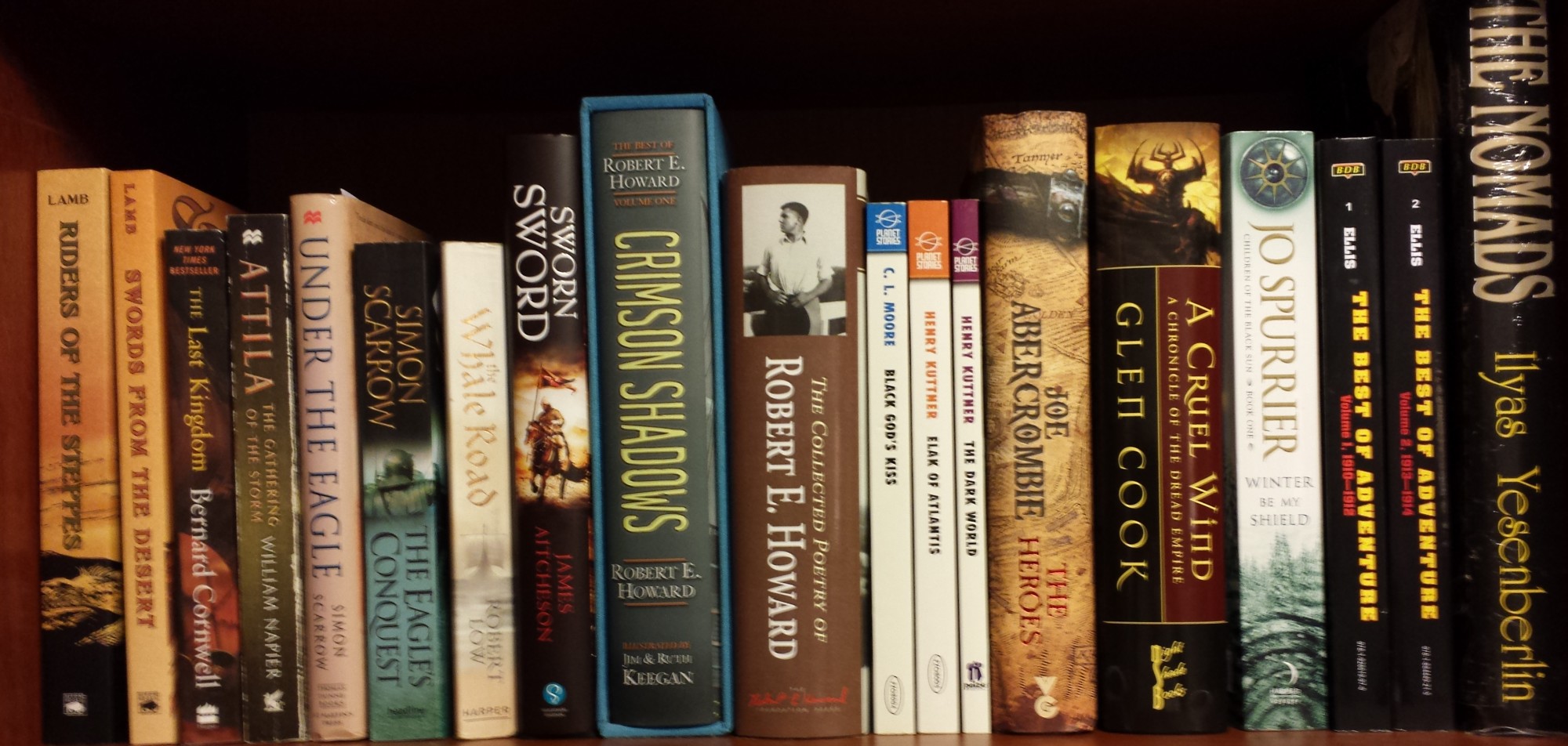Giant Thief
David Tallerman
Angry Robot Books
mmpb, 416 pp, $7.99 US/$8.99 CAN
416 pp, B format ppb, L7.99 UK/RoW
various ebook formats
With his debut novel, David Tallerman has succeeded in doing what few authors have done. He has written a story (novel, short story, length doesn’t matter) that made me laugh out loud. Well, it was more of a chuckle, actually. But it happened more that once. Do you have any idea how hard it is to make me laugh while I’m reading, even if I think the story is funny?
I don’t why that is; it just is. Tallerman pulled it off. That puts him squarely on my list of authors to read.
Now don’t get the idea that Giant Thief is a humorous novel, such as those written by Tom Holt or Terry Pratchett. It’s a pretty serious story. It’s hard to make sudden murder and mass slaughter funny.
The story starts off like this:
Easie Damasco is a compulsive thief. When the book opens, the soldiers he’s been caught stealing from are discussing the best way to kill him. They decide on hanging, but before he can expire, the invading warlord, Moaradrid, happens along and orders him cut down. Rather than waste cannon fodder, he conscripts Damasco into his army. The same army that’s invading Damasco’s home country.
Now he’s likely to die fighting against his own countrymen rather than at the end of a rope. Moaradrid has somehow managed to get the Giants to fight for him, something the opposing army doesn’t know yet. During the battle, the handler of a Giant named Saltlick is killed. Damasco’s commander orders him to take control of the Giant, which is done by riding on a harness strapped to the Giant’s back. Then the commander expires of his wounds.
Damasco decides the best course of action is to take Saltlick and flee. Saltlick is in favor of this idea, especially once Damasco promises him he won’t have to fight again. Seems the Giants are natural pacifists.
Of course Damasco can’t leave well enough alone. He has to try for a big score, and manages to steal a small purse from Moaradrid’s tent. So what’s a kleptomaniac to do once he’s swiped a valuable purse and a conscientious objector? Head for the hills, in this case literally.
Escaping isn’t as easy as Easie thinks it will be. There are people waiting for him when he returns to the nearest city. And there’s more in the purse of value than a few coins. Damasco finds himself in the center of a battle, both of steel and of wills, for control of what’s in that bag.
If you’re wondering by this point, where’s the humor in all this, it’s mostly at the beginning of the novel. Things get increasingly grim as the story progresses.
Oh, you mean in the situation. Do you remember that kid in junior high school (or middle school, if you prefer), the one who constantly had a wise-ass remark on the tip of his tongue and never seemed to take anything seriously? That’s Easie Damasco. He’s always got a quip, a happy-go-lucky yet cynical view of things. It was this sort of humor that made me laugh. I realize humor is subjective, and this form might not appeal to everyone, but for me it worked.
Damasco also has an unbelievable talent for rationalization and self-justification, traits that constantly land him in trouble. No wonder there’s a price on his head in one of the cities he and his companions visit. And he is incapable of keeping his sticky fingers to himself.
Not that this stops him from growing a conscience. He does begin to see how his actions hurt others, although in fairness to him, there are plenty of people using him for their own purposes. A mayor, a crime lord, a prince, and a guard captain. No one is completely without sin in this story.
And it’s a good story, one worth reading. There are passages where Tallerman captures the interaction between characters like an accomplished pro. When Mayor Estrada whispers to Damasco the reason she needs him in the war, and her response when he asks her to repeat herself is to yell the reason, Tallerman captured the guilt and conflicted emotion of a decent and honorable person forced to do something dishonorable for the greater good. It was one of the most effective scenes for me, and it wasn’t the only scene like this. Tallerman is clearly a good writer, but there are glimpses of greater talent still in development throughout the novel. He’s only gong to get better.
It would be tempting for Tallerman to have a romance develop between Damasco and Estrada. While that may yet happen in a future installment of this series, Tallerman took the more difficult and thus more rewarding course and refrained.
Another thing Tallerman did well was explain the geography. I still got turned around as to where places were in relation to each other. A map would have been nice. My copy is an eARC, so there might be a map in the final edition. If not, that’s something Angry Robot might want to consider for the sequel.
David Tallerman is not an author with whom I was familiar before reading this book. In fact I’d never heard of him. I’d be willing to be his name will become more prominent if he writes more books like this one. I’ll be looking forward to the sequel, but in the meantime, I’ll be hunting up his short stories.







